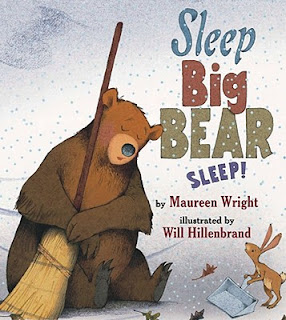Simple text is ¾ inch tall which makes pointing to words very easy. On every other double page spread there is the repeating phrase, “Silly little goose!” As children say the repeating phrase parent or librarian can point to each word.
Tafuri, N. (2001). Silly little goose.New York: Scholastic Press.
There are Cats in this Book and There are No Cats in this Book by Viviane Schwarz
Both of these books are told mostly in the “speech bubbles” of the cats who are “talking” to the reader. While reading this book the adult can point to the words in the speech bubble and also point to the cat that is saying these words. Book books are simple stories that children will really get in to! (You could also talk about print motivation while sharing this book because the reader is part of the story!)
Schwarz, V. (2008).There are cats in this book. Cambridge, MA: Candlewick Press.
Schwarz, V. (2010).There are no cats in this book. Cambridge, MA: Candlewick Press.
I Wanna Iguanaand I Wanna New Room by Karen Kaufman Orloff; illustrated by David Catrow
Both of these books are told in “letter writing” format. Alex writes notes to his mom trying to convince her he needs an iguana for a pet. Mom writes notes back telling Alex why an iguana would not be a good idea. In the second book Alex and Dad write notes to each other because Alex feels he needs his own room, now that a new baby has joined the family. The repetition of “Dear Mom” and “Dear Alex” helps children recognize those word written on the page.
Orloff, K. K. (2004). I wanna iguana (D. Catrow, Illus.). New York: G. P. Putman’s Sons.
Orloff, K. K. (2010). I wanna new room (D. Catrow, Illus.). New York: G. P. Putman’s Sons.
Aaaarrgghh! Spider! By Lydia Monks
Monks, L. (2004). Aaaarrgghh! Spider! Boston: Houghton Mifflin Company.
Literacy Centers and Activities for Nursery Rhymes
Using sentence strips is a good way to promote print awareness to a large group of children. The words themselves are larger than in a book (even a book book) so all children can see. Although they are not “reading” the words, you point to them as you say them, thus helping children learn that the words we say can be written down and then read.
Wislon, B., Brown, K., Guckian, M., &Dodds, D. (2004). Literacy centers and activities for nursery rhymes. Westminster, CA: Teacher Created Resources.































